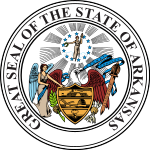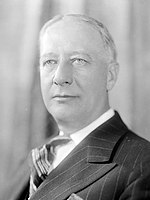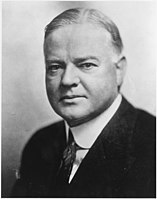| ||||||||||||||||||||||||||
| ||||||||||||||||||||||||||
 County Results
| ||||||||||||||||||||||||||
| ||||||||||||||||||||||||||
| Elections in Arkansas |
|---|
 |
The 1928 United States presidential election in Arkansas was held on November 6, 1928, as part of the 1928 United States presidential election. State voters chose nine electors, or representatives to the United States Electoral College, who voted for President and Vice-president.
Except for the Unionist Ozark counties of Newton and Searcy where Republicans controlled local government, Arkansas since the end of Reconstruction had been a classic one-party Democratic “Solid South” state.[1] Disfranchisement of effectively all African Americans and most poor whites had meant that outside those two aberrant counties, the Republican Party was completely moribund and Democratic primaries the only competitive elections. As in other areas in and around the Ozarks, a strong Socialist Party movement did develop in the 1900s, but it nowhere was threatening to Democratic hegemony and intimidation largely eliminated its influence from the mid-1910s.[2]
The 1920s did see a minor change in this, as increased voting by poor Ozark whites as a protest against Woodrow Wilson's internationalist foreign policy meant that Warren G. Harding was able to win almost forty percent of the statewide vote in 1920;[3] however despite his national landslide Calvin Coolidge in 1924 could not do any more than win the two traditional Unionist GOP counties.
With all other prominent Democrats sitting the election out,[4] the party nominated Alfred E. Smith, four-term Governor of New York as its nominee for 1928, with little opposition. Arkansas lies in the core of the Ozark “Bible Belt” and would have been expected to stand extremely vulnerable to anti-Catholic and pro-Prohibition voting – its public support for prohibiting the teaching of evolution in public schools showed Arkansas in the vanguard of fundamentalist Protestantism.[5] Elsewhere in the White South, extreme fear ensued because the region had no experience of the Southern and Eastern European Catholic immigrants who were Smith's local constituency. Southern fundamentalist Protestants believed that Smith would allow papal and priestly leadership in the United States, which Protestantism was a reaction against.[6] The Southern Baptist Convention said that
We enter into a sacred covenant and solemn pledge that we will support for the office of President, or any other office, only such men as stand for our present order of prohibition.[7]
- ^ See Urwin, Cathy Kunzinger (January 1991). Agenda for Reform: Winthrop Rockefeller as Governor of Arkansas, 1967-71. University of Arkansas Press. p. 32. ISBN 1557282005.
- ^ Green, James R. Apocalypse and the Millennium in the American Civil War Era: Radical Movements in the Southwest, 1895-1943. p. 316. ISBN 0807107735.
- ^ Phillips, Kevin P. The Emerging Republican Majority. pp. 211, 287. ISBN 978-0-691-16324-6.
- ^ Warren, Kenneth F. Encyclopedia of U.S. campaigns, elections, and electoral behavior: A-M, Volume 1. p. 620. ISBN 1412954894.
- ^ Gage, Justin Randolph (Winter 2009). "Vote as You Pray: The 1928 Election in Washington County, Arkansas". The Arkansas Historical Quarterly. 68 (4): 388–417.
- ^ Whisenhunt, Donald W. (2007). President Herbert Hoover. Nova Publishers. p. 69. ISBN 978-1600214769.
- ^ Maxwell, Angie; Shields, Todd G., eds. (May 2011). Unlocking V.O. Key Jr.: "Southern Politics" for the Twenty-First Century'. University of Arkansas Press. pp. 17–18. ISBN 978-1557289612.


